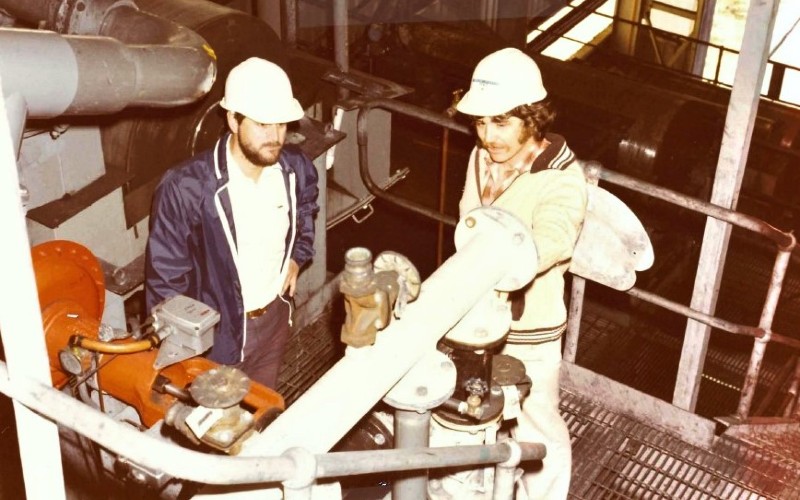The groundwater treatment plant that quietly changed the world
An experimental pilot at the Mirrabooka Groundwater Treatment Plant saw clothes become whiter using a SIROFLOC process.
Mirrabooka Groundwater Treatment Plant recently celebrated a 50-year operating milestone, making it the oldest groundwater drinking facility in Perth.
Ensuring availability and delivery of water over the years has presented many challenges and triumphs. But the plant’s biggest achievement may be pioneering a little-known project that revolutionised Australian homes—and wardrobes—in the 1970s.
Back in the 70s, muddy or coloured water persistently made clothes a little less-whiter-than-white. This dilemma was quietly overcome at our Mirrabooka groundwater treatment plant through an experimental process called SIROFLOC.
Introducing a new shade of white
In the late 1970s a unique method of water treatment—dubbed SIROFLOC—was developed by CSIRO researchers at the Division of Chemical Technology.
In this process, colour and suspended matter that clouds water (turbidity) are removed from surface and groundwater using magnetic powder (magnetite). The SIROFLOC process relies on magnetic forces to collect the matter we wish to remove from the water, which then forms clumps and quickly settles to the bottom of our clarifying tanks. The best part of this process? The magnetic powder is completely re-usable, making it a sustainable and cost-effective treatment option.
The advantages of this Australian invention over a full-scale conventional treatment plant means less capital cost and much less sludge for disposal. Once the water has been clarified, it is then desalinated to drinking water standards.

Workers at the Mirrabooka Groundwater Treatment Plant circa 1970
SIROFLOC goes international
The process was piloted in the 1980s after the construction and operation of our full-scale demonstration plant at Mirrabooka. The pilot provided evidence that the SIROFLOC process worked, offering a more economical and sustainable water treatment option for the rest of the nation. It was a game changer for every Australian home.
The process was then adopted across the globe in places like England, New Zealand and Taiwan. Who would have guessed such a historical milestone would happen in a small, unheard-of water facility in Perth?

Mirrabooka Groundwater Treatment plant in the 1970s
Thank you to 50 years of service
Mirrabooka was officially opened on 17 February 1971, as part of a state initiative to help meet the demand for water in the metropolitan area.
Treatment and Resource Recovery Manager of Maintenance and Operations Paul Barker said the Mirrabooka facility was a great example of an Australian initiative driven by skilled staff and technology.
“This facility has gone from strength to strength since its opening day and to reach 50 years is a remarkable achievement,” he said.
On behalf of everyone here at Water Corporation, thank you to the many teams for their contributions to ensure this facility has delivered reliable, clean and safe drinking water for half a century.
Together, we have been a part of this major innovation in the water industry which is recognised across the globe.